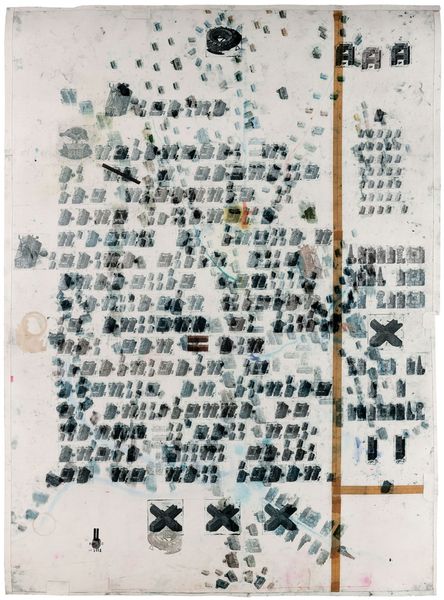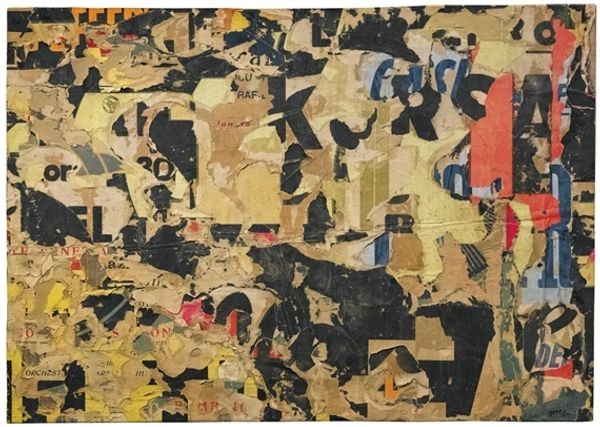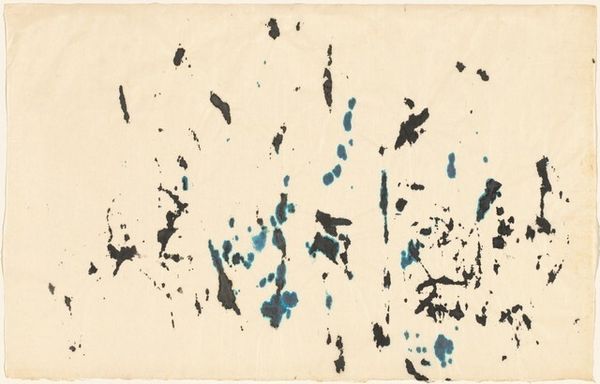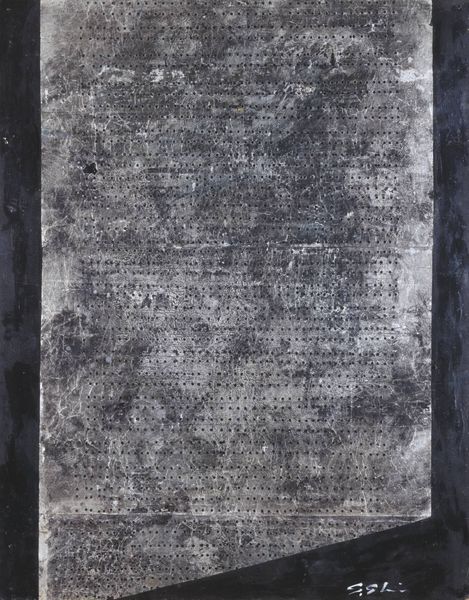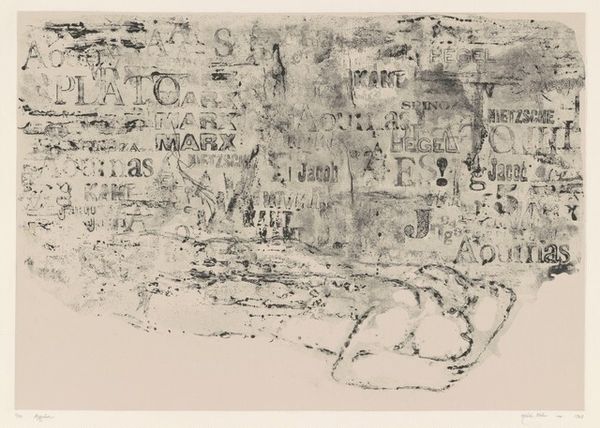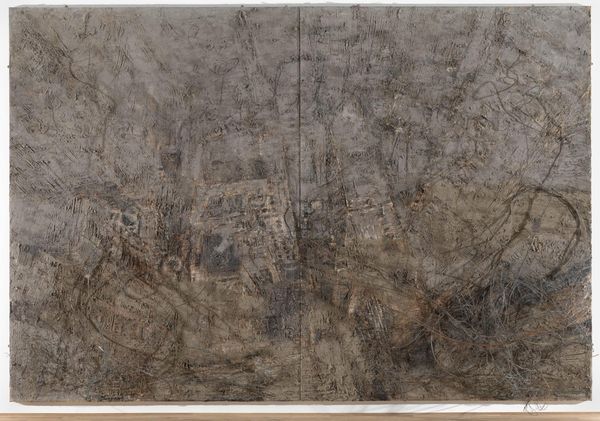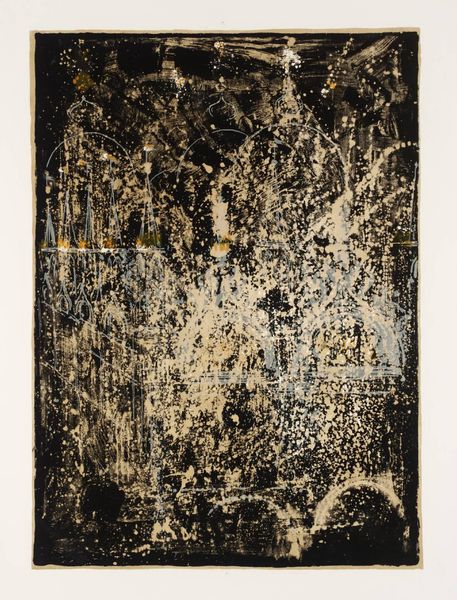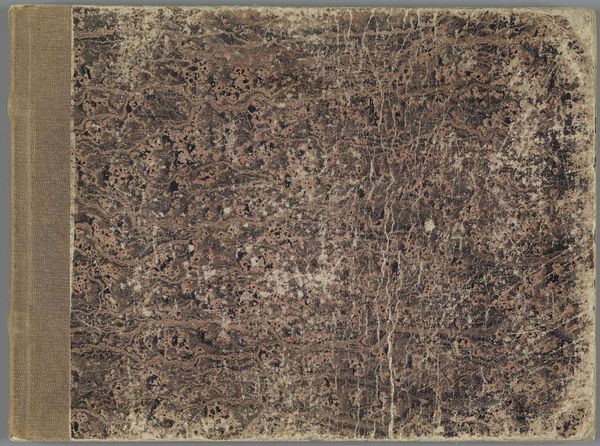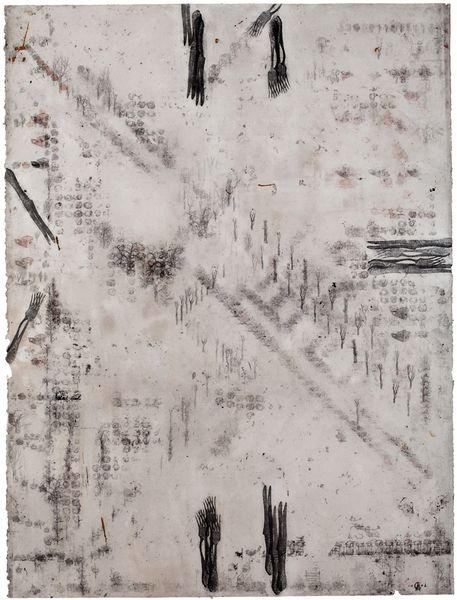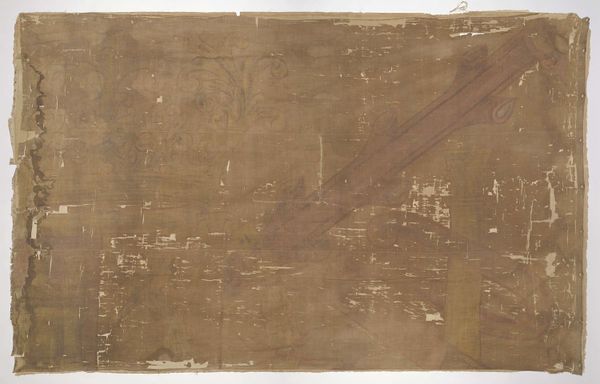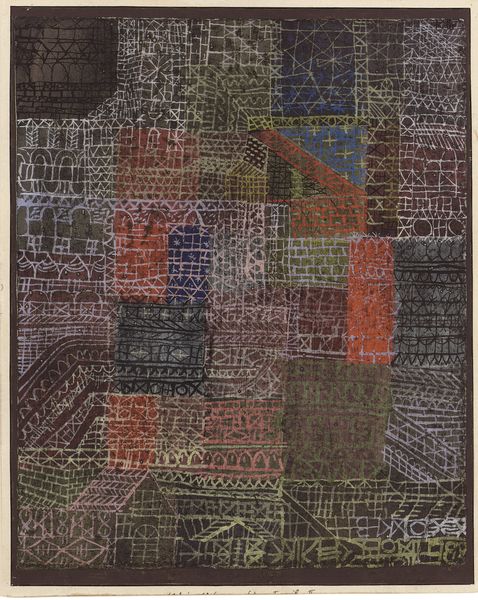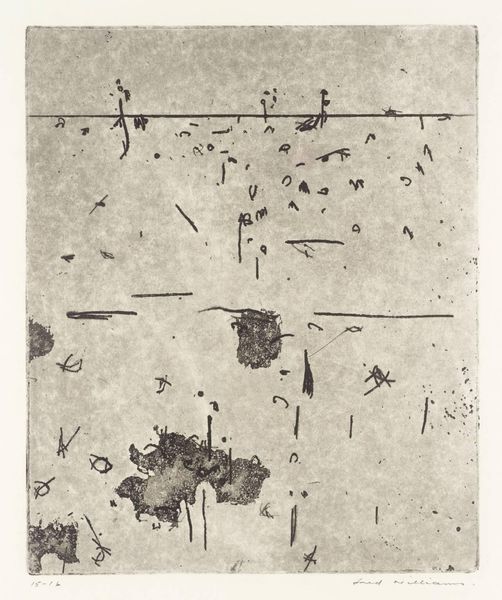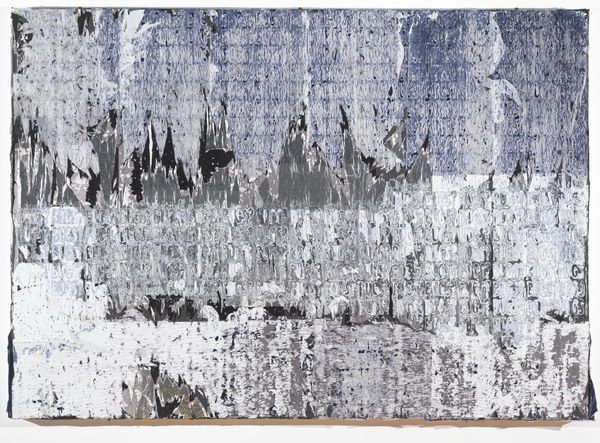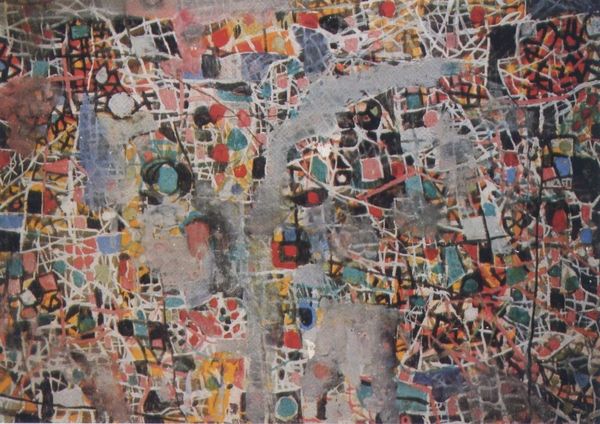
Dimensions: support: 1830 x 910 mm
Copyright: © The estate of Gwyther Irwin | CC-BY-NC-ND 4.0 DEED, Photo: Tate
Editor: Here we have Gwyther Irwin's "Letter Rain" of indeterminate date, currently held at the Tate. It's quite striking, almost like a decaying urban wall, layered with fragments of text. What do you see in this piece, focusing on its formal qualities? Curator: I see an exploration of texture and surface, achieved through the superimposition of textual fragments. The stark contrast between black and white creates a dynamic visual rhythm, drawing the eye across the canvas. Note how the density shifts, almost mimicking natural erosion. What structural elements stand out to you? Editor: The way the text fades from a dense cluster at the top to almost nothing at the bottom is really compelling. It gives it a sense of movement. What does that gradient suggest to you? Curator: It suggests a deconstruction of language itself, a visual analogue to entropy. The legibility decreases, forcing us to consider the materiality of the letters rather than their semantic content. A fascinating comment on the nature of communication and decay, wouldn't you agree? Editor: I do. I hadn't considered it in terms of language deconstruction before. Thank you.
Comments
Join the conversation
Join millions of artists and users on Artera today and experience the ultimate creative platform.
tate 8 months ago
⋮
Letter Rain was made from advertising posters that Irwin and his wife scavenged from around the East End of London. He then ripped them into fragments, and reassembled the pieces as an abstract collage. Some of the fragments are reversed, others are the right way round. Individual words and letters are clearly legible in the upper half of the work. Further down, the deluge of letters subsides into a haze of pale fragments through which faint traces of letters are just visible. Gallery label, November 2005
